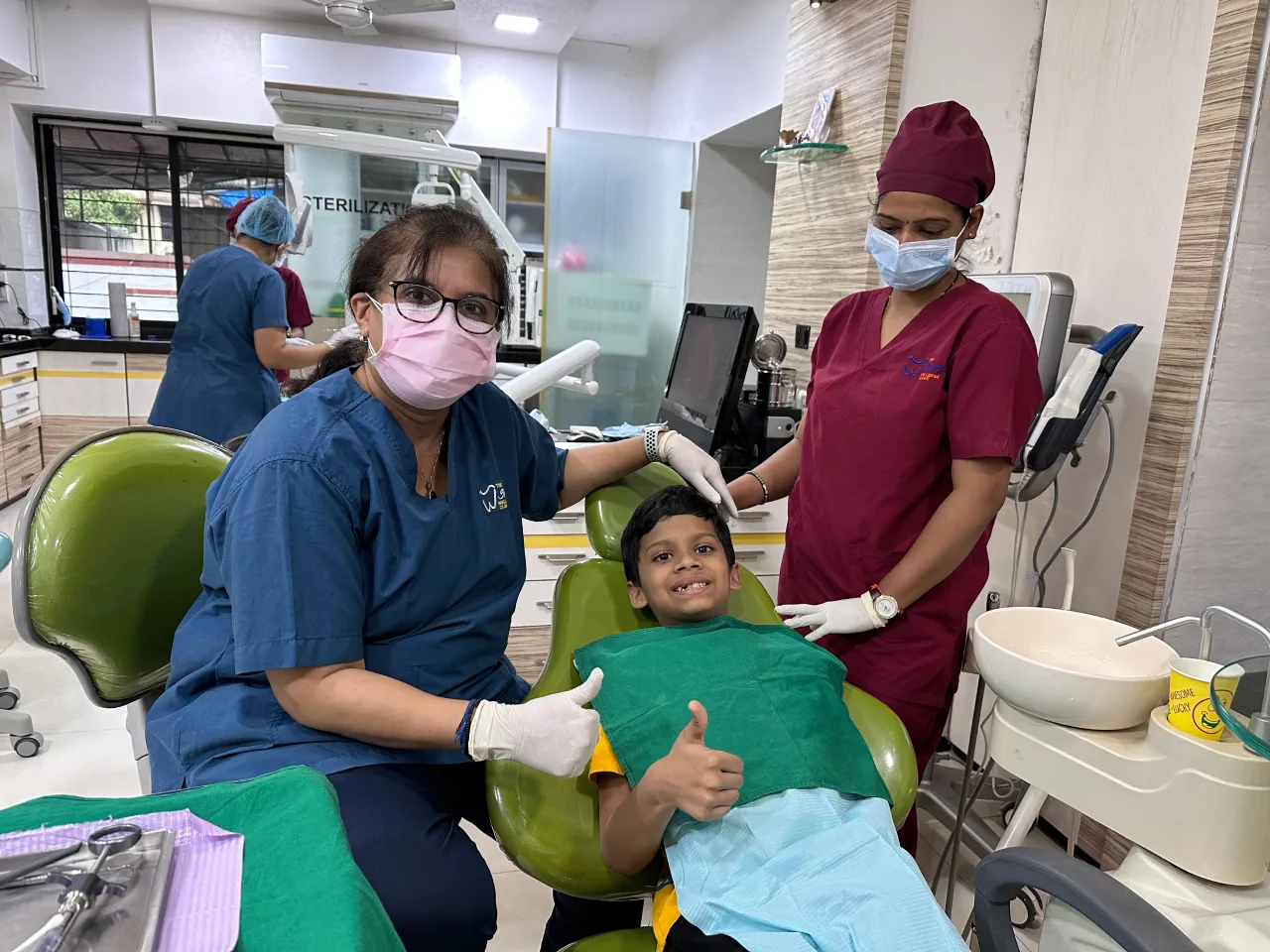- The American Association of orthodontists and Indian Orthodontic Society recommend all children get an Orthodontic checkup with an Orthodontist no later than 7yrs.
- By this age your child's teeth have developed enough for orthodontists to spot subtle problems with jaw growth and emerging teeth.
- So , early treatment may prevent or intercept more serious problems from developing and make treatment at a later age shorter and less complicated.
Early treatment may give the orthodontist a chance to
- Guide jaw growth
- Lower the risk of trauma to protruded front teeth
- Correct harmful habits
- Improve appearance
- Guide permanent teeth into a more comfortable position
- Create a more pleasing arrangement of teeth, lips and face
Signs the Bite's Not Right:
It's not always easy to tell when your child may need braces or has an orthodontic problem. Even teeth that look straight may be hiding a problem bite. Here are some clues that may indicate the need for orthodontic attention:
• Early or late loss of baby teeth
• Difficulty chewing or biting
• Breathing through the mouth
• Thumb-sucking
• Crowded, misplaced or blocked-out teeth
• Jaws that are too far forward or back
• Biting the cheek or biting into the roof of the mouth
• Protruding teeth
• Upper and lower teeth that don't meet, or meet in an abnormal way
• An unbalanced facial appearance
Grinding or clenching of the teeth








